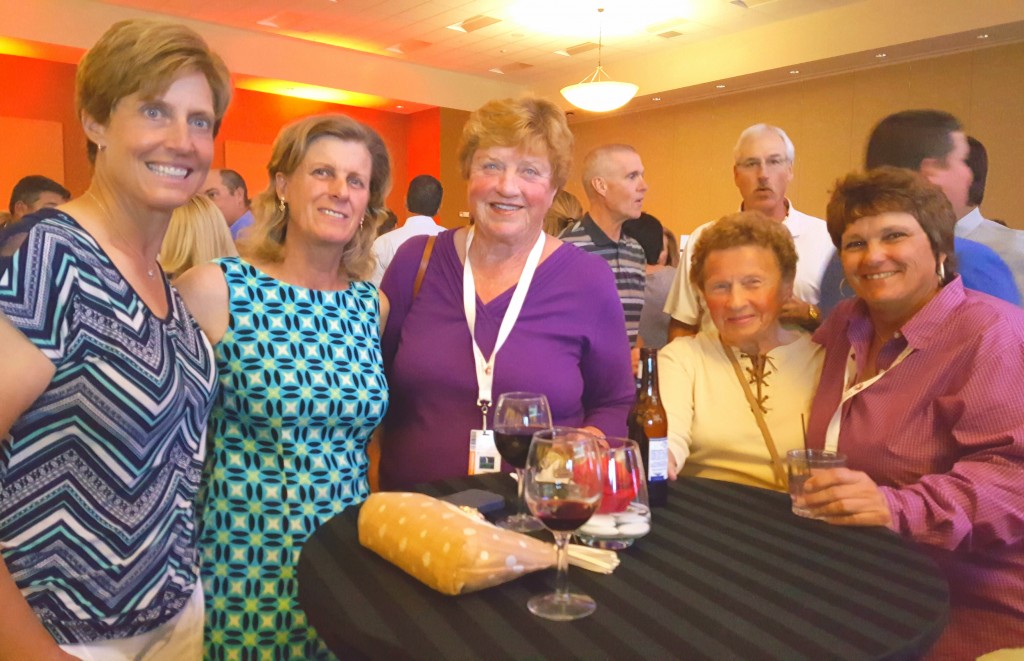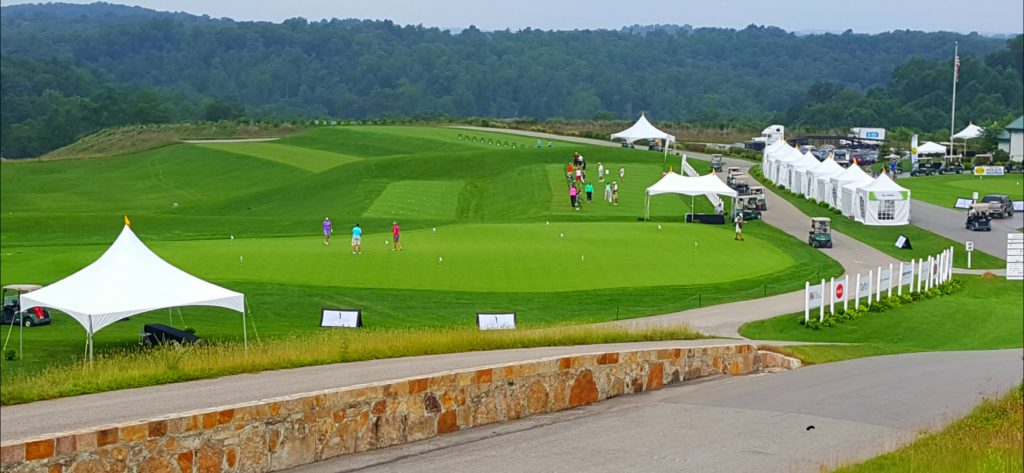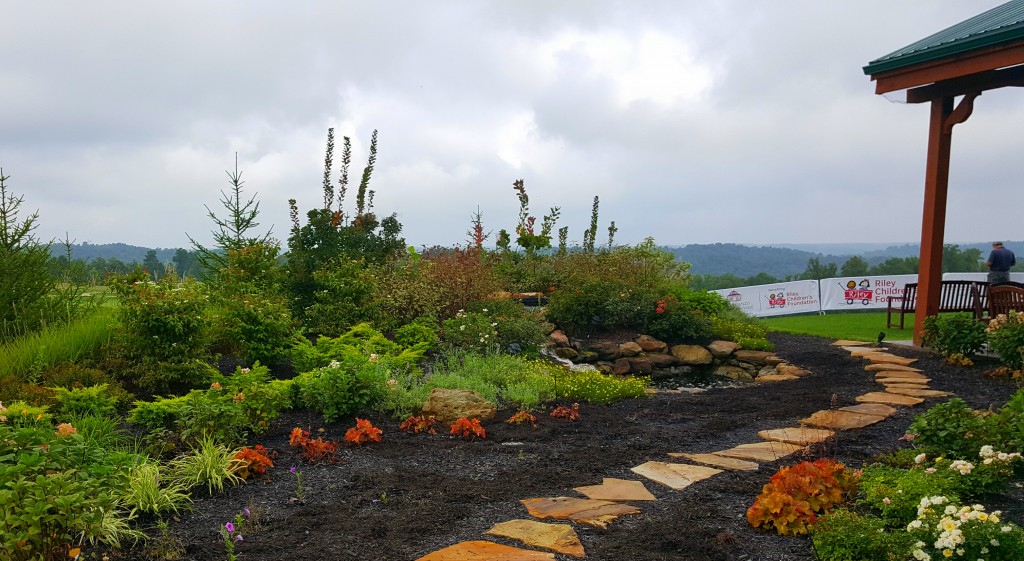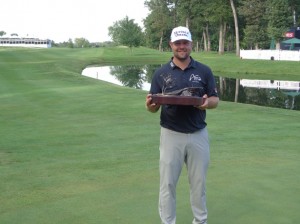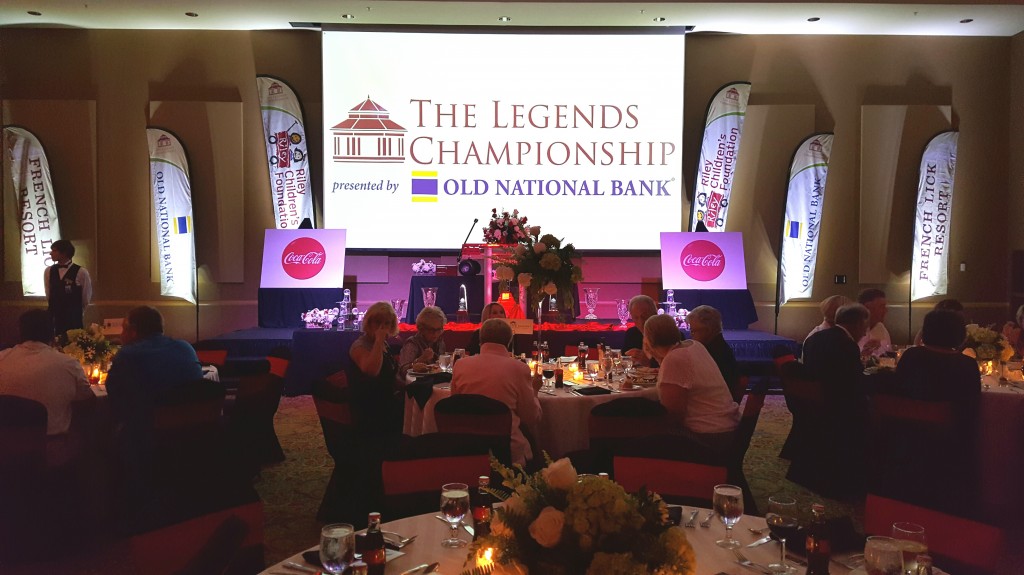
FRENCH LICK, Ind. – Weather conditions were less than ideal when the fourth annual Legends Championship teed off Saturday on the Pete Dye Course at French Lick Resort. A tee time adjustment, calling for play to begin off both the Nos. 1 and 10 tees, was made when afternoon rains entered into the forecast.
The weather forecast, though, didn’t dampen the enthusiasm at the tournament’s annual Hall of Fame gala and induction dinner at the resort’s Hoosier Ballroom on Friday night. That event climaxed a day-long pro-am event on the Pete Dye Course.
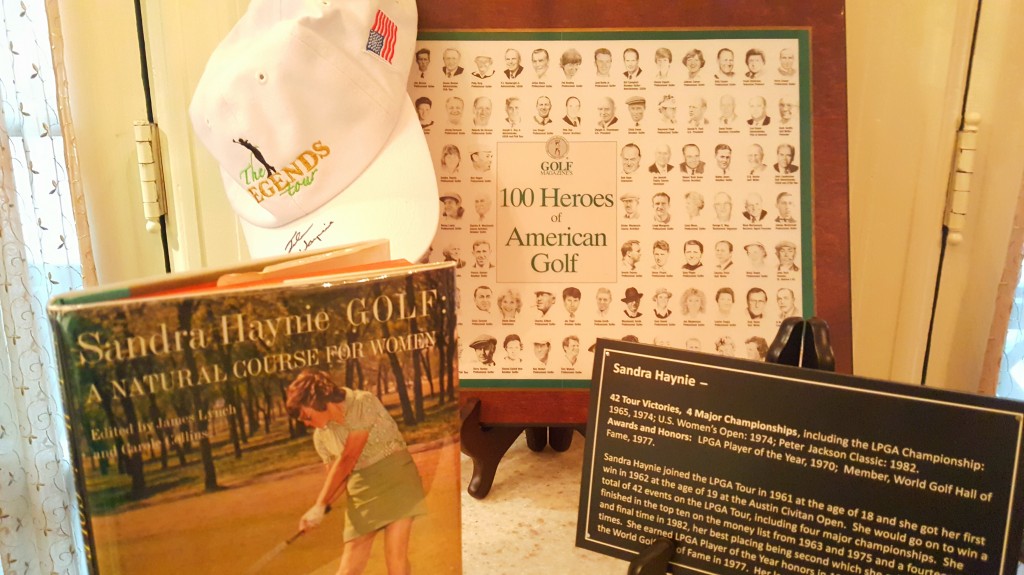
Not only was the pro-am a sellout, with 51 fivesomes participating, but the dinner kicked off on another high note when Joe Vezzoso – the resorts’s vice president of operations – announced that this Legends Championship and its related events had led to a $200,000 donation to the Riley Children’s Foundation.
The evening’s featured event, though, was the induction of Elaine Crosby and Sandra Haynie into the Legends Hall of Fame. Jane Blalock, chief executive officer of the Legends Tour and a Hall of Famer herself, welcomed Crosby and Haynie into the select company that also includes Kathy Whitworth, Jan Stephenson, Nancy Lopez, JoAnne Carner and Rosie Jones plus the winners of the two women’s majors played at French Lick – Betsy Rawls and Mickey Wright. Rawls and Wright won LPGA Championships on what is now the resort’s Donald Ross Course in 1959 and 1960, respectively.
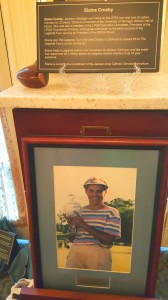
“We all love coming to this place. It’s magic,’’ said Blalock, who announced that The Legends Tour would also make a $1,000 donation to the Riley Children’s Foundation.
Crosby played on the LPGA Tour for 20 years and had victories at the 1989 Mazda Japan Classic and 1994 Lady Keystone Open. She has also hosted a Legends event in her hometown of Jackson, Mich., for 15 years. It has raised nearly $3 million for Wendy’s Wonderful Kids and it will raise much more, as the event’s sponsor has committed to another 15 years.
Despite those estimable accomplishments, she downplayed her selection to The Legends Hall of Fame, saying she was “very shocked’’ when she received notice of her selection from French Lick director of golf Dave Harner.
Citing Haynie and the previous inductees, Crosby said “I would never have put my name into a Hall of Fame with them. I’m just excited to be part of it, and very humbled. It’s not every day you get inducted into a Hall of Fame with a Hall of Famer.’’
For Haynie the honor completed a sweep for her in women’s golf. She had earlier been inducted into the LPGA and World Golf Halls of Fame.
“Golf has been a wonderful journey for me,’’ said Haynie, who won 42 LPGA tournaments and four major championships. It’s given me a wonderful life, with wonderful friends. I want to thank French Lick for coming up with the idea for creating a Legends Hall of Fame, where our players will live forever. This is such an honor because I get to be with my friends.’’
